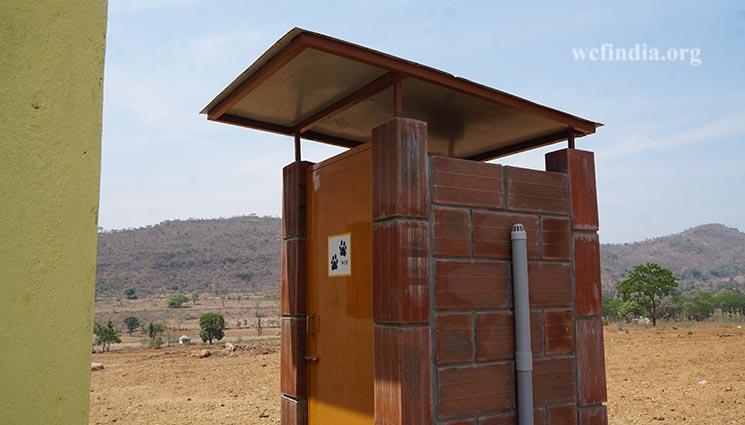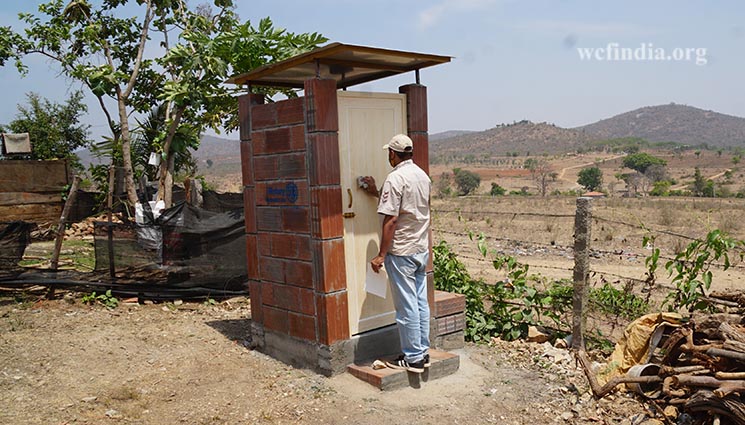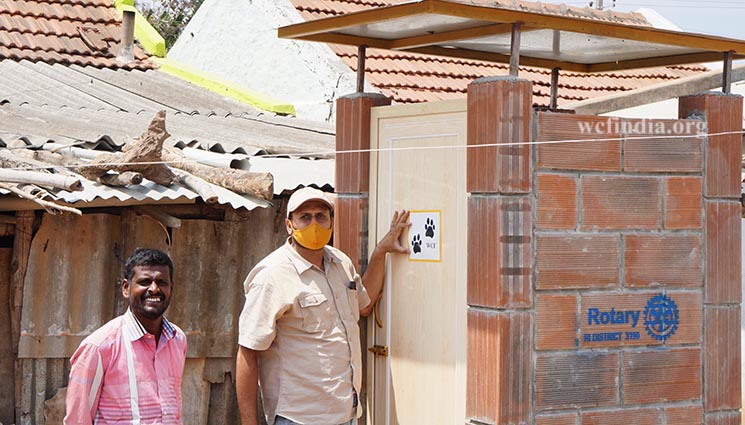Human-Animal Conflict Mitigation Projects
Man has created a great eco imbalance by hunting, manmade forest fires, road kills, electrocution, deforestation etc., while the man-animal conflict has accounted for loss of life on both sides, created a socio-economic imbalance in the forest fringe villages. WCF has sincerely worked to reduce this imbalance by mitigating, creating awareness and providing sustainable alternative to impoverish the pressure on forest.
Conflict results in loss on either sides and eventually it’s the innocent wildlife that suffers. WCF has been working towards mitigation of conflict through many experimental and proven methods. WCF succeeded in getting the desired results in its pilot project in Mangala, Jakkalli and Yelchetty. Many small and medium land holders were under loss due to crop raining wildlife, many had given up farming. After WCF initiated Community Solar / Electrical pulse fencing programme, at a reduced cost, where the community is involved in maintaining the electrical pulse fencing that increased protection to agriculture fields and people’s participation in conservation was achieved.
Community Based Solar Fence
Community Based Solar Fencing in conflict villages in Bandipur Tiger Reserve to save Elephants. It has taken a paradigm shift addressing both wildlife and farmers basic problem in conflict villages around Bandipur Tiger Reserve. Mangala is one of the fifteen villages that is surrounded by forest on all sides, in Bandipur Tiger Reserve creating a box canyon of wildlife conflicts from all sides, farmers here on daily basis conflict with Elephants, Wild Pigs, Spotted Deer and their long awaited crop yield is lost due to crop raiding by wild animals, especially Elephants that has become their enemy. Using live electric wire from the electric pole to their barbed wire fence is illegal, when elephants visit these farm lands for crop raiding, they come in contact with the wire, and death was promised.
Elephant electrocution deaths were a common incidence in these villages, until WCF intervened and started “Community based solar fencing in conflict villages of Bandipur Tiger Reserve to save Elephants” by helping farmers to fix DC powered fence to their farm lands in Mangala village and now it is proficiently proved that by protecting the farmer’s crop and promising revenue, wildlife conservation is possible. Gathering momentum, a group of farmers collectively came forward and our initiative of community based solar fencing became a movement. Now WCF has installed solar powered fence covering 600+ acres of agricultural land and 100 families, around 500 beneficiaries of our first phase in Mangala, Jakalli and Yelchetti village. These high conflict areas surrounding Bandipur Tiger Reserve needs resource and people to get involved in this solution based projects, helping both farmers and wildlife.
We have succeeded in solving the basic problem of farmers, work and food security, earning his daily bread. We are getting enquiries on a daily basis from fellow farmers in adjoining High wildlife conflict villages that are also conflict prone. We need help to buy solar power fencing materials. A promising yield helps farmer build his revenue structure and maintenance of solar fence keeps wild pigs and elephants away and helps in conservation.
OUTCOMES OF OUR EFFORT
- No Elephant electrocution deaths
- No requisition for crop compensation
- Friendly attitude towards Elephants
- Education and spread of news to save wildlife
- Co-existence without conflict
- Promising yield to farmers
- Crop security to farmers in high wildlife conflict areas
- Revenue securing system to farmers is promised
- No human or elephant deaths for the last 10 years
Predator Proof Cattle Sheds
Wildlife management in India is a tough challenge, facing conflicting wildlife on one side and poor farmers who live at the edge in conflict-prone villages that are close to forests. Tigers are prolific breeders and once the young ones come to age they are driven away by the mother, these stragglers start their search to find new territories. In both cases the old and very young stragglers come out of the forest and search for prey, literally they find a fair population of livestock and start preying on them and becoming cattle lifters. Man and animal conflict is triggered from here, cattle herders who keep vigil have to compete with Tigers and Leopards. Here on cattle lifting Leopards and Tigers become bolder from their act and start moving closer to human enclosures, especially targeting cattle sheds.
Cattle sheds in south India are nothing but a stack of hay on the roof and dry stumps that are entwined with barbed wire or simple dry thorny scrubs that has to hold the defense of a Tiger or Leopard or sometimes even Elephants. Battle is lost here and Tiger and Leopards have easy picking from these defenseless cattle sheds, successful acts emboldens the carnivore and increase encounters of conflict. If the prey is procured like a sheep, goat or cattle, Tigers and Leopards fight fiercely to secure their food, once threatened by humans they charge at them and many a time loss of human life. This creates enmity and eternally people try to take revenge and killing at spree happens through poisoning the cattle carcass, as usually Tigers and Leopards visit again to eat their quarry, and they die eating poisoned carcass. We have been in the field for the last 25 years and found several encounters where we have lost Tigers and Leopards due to poisoning and even loss of human life.
Mitigating these conflicts needs a dual approach that helps farmers who are in line of conflict and Tigers and Leopards (sometimes Elephant) that indulge in these acts. By securing their cattle sheds that acts as a sheltered prey for carnivore, once the first attempt of emboldened Tiger or Leopards fails to secure prey from safer cattle sheds, the imprinting will wail the suitor from re-trying. Also gives ample time for the livestock to raise an alarm. We need to build these cattle sheds that are strong, long lasting and carnivore resistant. It should also resist the vagaries of atmosphere and show successfulness in an area where conflict is a daily business. We need 50 of these cattle sheds spread over conflict villages that are very close to forest boundary.
OUTCOMES OF OUR EFFORT
- Economic benefit to farmers by securing milking livestock
- Tolerance towards conflicting wildlife
- A permanent containment solution to wildlife conflict
- Ecological understanding to live in conflict prone area
- securing sustenance to marginal farmers
- Saving wildlife
Toilets in Forest Fringe Villages
Importantly conflicts from carnivores especially Tiger and Leopard that stray outside the forest confuse the squatting position of humans to be their prey and incidentally in several occasions accidental deaths of humans have taken place in the proposed project area. This unleashes anger against the animal and will be targeted for revenge killing, by poisoning the carnivore, eventually killing it. Loss of human life and wildlife is at stake. As we are expanding the coverage of community based solar fending, noticed that villagers are devoid of clean drinking water and safe defecation facilities. Even the schools are in need of proper toilets. The villagers are in need of awareness of ill effects of practicing open defecation, using unsafe water and women hygiene.
In all these cases of human death it was accidental and person was killed but not eaten. If we can provide quality toilets to houses at these high pressure conflict villages both the problems will be solved, and the contribution goes a long way in saving wildlife and creating a conscious, healthy and hygiene rural populace.
The Permanent Solution
25 Toilets were constructed in Mangala, Jakkali and Yelchetti with the help of Rotary Club Bangalore, A complete turnkey toilet project with concrete construction, vitrified floor, water tank, proper ventilation, water sump (to lift water to the storage tank), masonry, proper taps and storage tanks.
Quality is maintained so the purpose is served for a long term permanent utility.
